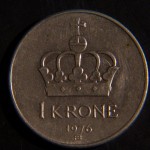On Thursday (in GMT terms) gold for delivery in December traded within the range of $1,251.8-$1,271.6. Futures closed at $1,253.0, plunging 1.23% compared to Wednesday’s close. It has been the 188th drop in the past 353 trading days and also a fifth consecutive one. The daily low has been a level unseen since June 8th, when the commodity went down as low as $1,247.3 per troy ounce. The precious metal has increased its drop to 4.87% so far during the current month, after gaining 0.43% in September.
On the Comex division of the New York Mercantile Exchange, gold futures for delivery in December were edging up 0.37% on Friday to trade at $1,257.6 per troy ounce. The precious metal went up as high as $1,262.0 during early Asian trade, while the current daily low was at $1,252.5 per troy ounce, recorded during the early phase of the Asian trading session as well.
The US Dollar Index, a gauge reflecting the relative strength of the greenback against a basket of 6 other major currencies, was edging up 0.43% on the day at a level of 97.09, after going up as high as 97.11 earlier. The latter has been its highest level since July 27th. The gauge has increased its advance to 1.77% so far in October, following a 0.65% drop in September.
Gold futures tumbled to fresh lows unseen in 4 months on Thursday, as US 2-year bond yields climbed further to highs not seen since early June. The US Dollar has recently been supported by expectations that the Federal Reserve Bank will tighten monetary policy by the end of the year, as latest key indicators of consumer sentiment, manufacturing and services sector activity in the country performed solidly, outstripping market expectations. Yesterdays weekly report on lay-offs also added to the rather positive overall macroeconomic performance. The number of people in the United States, who filed for unemployment assistance for the first time during the business week ended on September 30th, fell to 249 000, or a level not seen since mid-April, from 254 000 in the preceding week. The 4-week moving average, an indicator lacking seasonal effects, dropped to 253 500, or its lowest level since 1973.
Today gold trading may be strongly influenced by the highly anticipated monthly report on non-farm employment growth in the United States. Employers in all sectors of economy, excluding the farming industry, probably added 175 000 new jobs in September, according to the median forecast by experts, after a job gain of 151 000 in August. In case of a higher-than-expected gain in jobs in September, demand for the US dollar would be strongly supported, while this would mount further selling pressure on gold. The Bureau of Labor Statistics will release the official employment data at 12:30 GMT.
Market players will be also paying a close attention to the public appearances of a number of Federal Reserve officials. At 14:30 GMT Federal Reserve Vice Chair, Stanley Fischer, is to take part in conversation on the economy and federal regulation at the Institute of International Finance Annual Membership Meeting in Washington.
At 16:45 GMT the Fed President for Cleveland and also a FOMC member, Loretta Mester, is to speak on “Fed Communications” at the Shadow Open Market Committee Fall Luncheon Meeting in New York.
At 20:00 GMT Federal Reserve Board Governor, Lael Brainard, is to take a statement on “Blockchain Technology” at the Institute of International Finance Annual Membership Meeting in Washington.
Any remarks in regard to the Bank’s future policy or US macroeconomic development would certainly heighten USD and gold volatility.
According to CME’s FedWatch Tool, as of October 6th, market players saw a 14.5% chance of a rate hike occurring at the Federal Reserve’s policy meeting in November, down from 15.5% in the prior business day, and a 63.4% chance of a hike in December, up from 59.8% in the preceding business day. As far as the February 1st 2017 meeting is concerned, the probability of such a move was seen at 65.6% on October 6th, up from 63.1% in the prior business day.
Meanwhile, silver futures for delivery in December were edging up 0.27% on the day to trade at $17.392 per troy ounce, after going up as high as $17.422 a troy ounce during the mid phase of the European trading session.
Daily, Weekly and Monthly Pivot Levels
By employing the Camarilla calculation method, the daily levels of importance for gold are presented as follows:
R1 – $1,254.8
R2 – $1,256.6
R3 (Range Resistance – Sell) – $1,258.4
R4 (Long Breakout) – $1,263.9
R5 (Breakout Target 1) – $1,270.2
R6 (Breakout Target 2) – $1,272.8
S1 – $1,251.2
S2 – $1,249.4
S3 (Range Support – Buy) – $1,247.6
S4 (Short Breakout) – $1,242.1
S5 (Breakout Target 1) – $1,235.8
S6 (Breakout Target 2) – $1,233.2
By using the traditional method of calculation, the weekly levels of importance for gold are presented as follows:
Central Pivot Point – $1,326.4
R1 – $1,336.8
R2 – $1,356.5
R3 – $1,366.9
R4 – $1,377.3
S1 – $1,306.7
S2 – $1,296.3
S3 – $1,276.6
S4 – $1,256.9
In monthly terms, for the yellow metal we have the following pivots:
Central Pivot Point – $1,326.7
R1 – $1,348.0
R2 – $1,378.8
R3 – $1,400.1
R4 – $1,421.3
S1 – $1,295.9
S2 – $1,274.6
S3 – $1,243.8
S4 – $1,212.9





